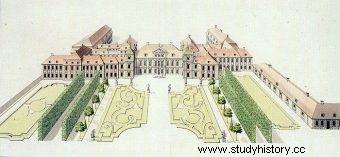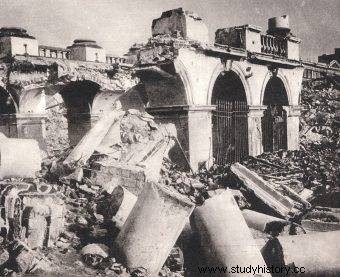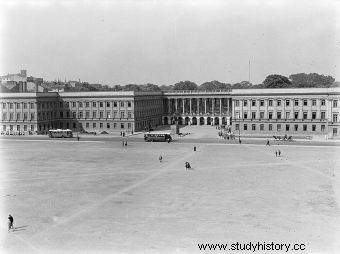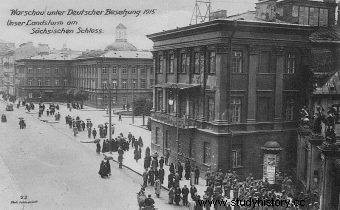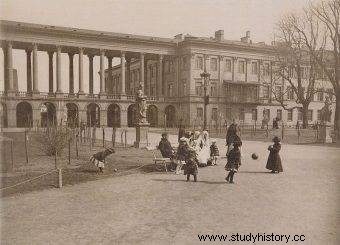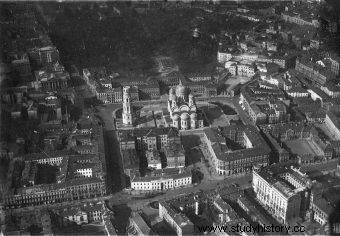Today, Deputy Prime Minister Piotr Gliński appointed the members of the Management Board of the Special Purpose Vehicle that will be responsible for the reconstruction of the Saski Palace.
In 2018, on the hundredth anniversary of Poland regaining independence, President Andrzej Duda signed a declaration on the restoration of the Saski Palace in Warsaw.
Considering that the Saski Palace with the Tomb of the Unknown Soldier is permanently present in the collective consciousness of Poles and represents an integral element of our national heritage, I believe that the postulate of restoring the destroyed one is fulfilled buildings during World War II for a special act of remembrance, which will remain for posterity a permanent trace of the celebration of the Centenary of Poland Regaining Independence , a manifestation of Poles' concern for the material heritage of their sovereign Homeland, as well as a visible sign of the ties linking today's Republic with the Polish State reborn in 1918 - underlined the President.
On Wednesday, December 1, 2021, a ceremony took place at the Royal Castle in Warsaw, during which Deputy Prime Minister Piotr Gliński handed over the appointments of the members of the Management Board of the Special Purpose Company Pałac Saski sp.z o.o. Jan Edmund Kowalski became the president. Robert Cicirka was appointed vice-president for financial affairs, and Robert Bernisz was appointed a member of the management board. In addition, a supervisory board of six was established.

Piotr Gliński
Gliński thanked the historians of art, town planning and architecture - the initiators of the reconstruction. He emphasized that despite their willingness, they were unable to rebuild the palace immediately or several years after the end of World War II. A letter to the participants of the ceremony was written by the Marshal of the Sejm, Elżbieta Witek. In it she colloquially stated that "word turns into action".
According to the deputy prime minister, the reconstructed buildings are to be used for " two very important state institutions - the Senate of the Republic of Poland and the Voivodship Office - and for cultural, educational and social institutions" .
"It is estimated that the total cost of projects implemented on the basis of the proposed regulations will amount to approximately PLN 2 billion 453 million 230 thousand over the course of 10 years. PLN " - we read in the justification to the bill.
Saski Palace - a short history
The predecessor of the Saski Palace was the manor house belonging to Tobias Morsztyn. After 1661, his brother and heir, Jan Andrzej Morsztyn, replaced the manor with a baroque palace (Morsztyn Palace) with four characteristic towers.
In 1713, the palace was purchased by the first of the two Saxon kings ruling Poland - August II. The ruler began its expansion. It was completed by his son, King Augustus III. At the beginning of the 19th century, the Warsaw Lyceum was located in the Saski Palace, where the French language was taught by Fryderyk Chopin's father , Mikołaj Chopin, living with his family on the premises of the Palace. The palace was still rebuilt in 1842.
After Poland regained independence, the General Staff of the Polish Army was located in the palace. In 1925, the Tomb of the Unknown Soldier was created in the arcade topped with a colonnade, connecting the two symmetrical wings of the building. The palace was still located between the Saski Garden at the back and Saski Square at the front - after Józef Piłsudski's death it was renamed the Square named after him.
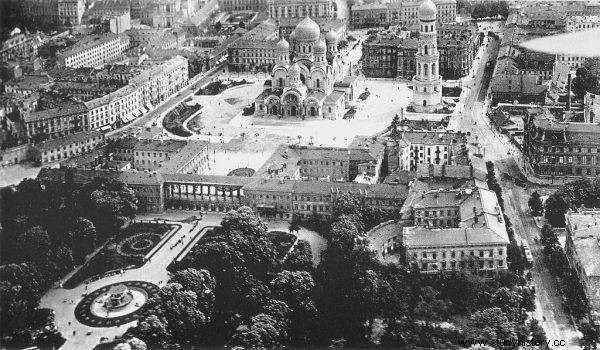
Aerial photo of the Saski Palace and the surrounding area from around 1919
One of the most interesting stories related to the Saski Palace is the one related to Enigma. In December 1932, it was within its walls that the code of this German machine was broken for the first time. Then it was read for several years, until in 1937 the German section of the Cipher Bureau of the General Staff was transferred to a new, specially designed headquarters.
During World War II, after the Germans suppressed the Warsaw Uprising in 1944, the Saski Palace was blown up by the Germans as part of the planned destruction of Warsaw. Only fragments of the central arcades have survived, where the Tomb of the Unknown Soldier was located.
After 1989, the rebuilding of the palace was discussed several times.
Gallery:
- Saski Palace in the 18th century
- Damage in 1944
- Palace in 1934
- Palace facade from Saski Square before 1919
- Palace from the side of the Saski Garden around 1895
- Saski Palace from the 1920s bird's eye view.

